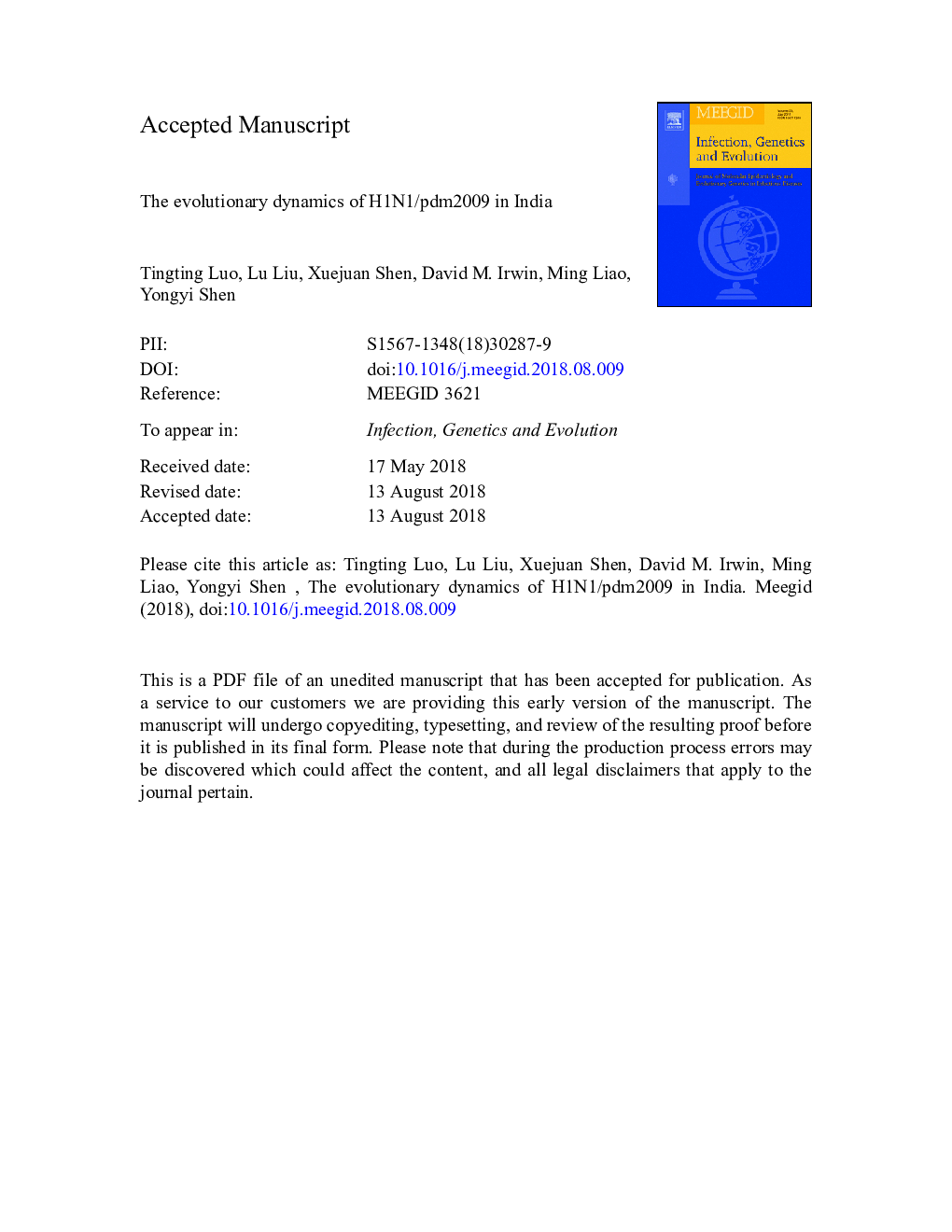| Article ID | Journal | Published Year | Pages | File Type |
|---|---|---|---|---|
| 8646515 | Infection, Genetics and Evolution | 2018 | 32 Pages |
Abstract
After the 2009 pandemic H1N1 outbreak, this new reassortant virus replaced the previous seasonal H1N1 and established itself in human populations. In 2014-2015, the H1N1/pdm2009 pandemic strain caused the worst influenza outbreak in India in recent years. It is still unclear whether this outbreak was due to a genetic change in the H1N1/pdm2009 virus. Here, we collected all available data from India, and used data from other South and Southeast Asian countries (Bangladesh, Myanmar, Nepal, Singapore, and Vietnam) that are geographically nearby India for comparison, to examine the evolutionary dynamics of this influenza virus. We detected signals of population expansion in both HA and NA in the 2014/2015 season in India, which coincided with the outbreak in India of 2015. Signals of positive selection in HA in the 2012/2013 and 2013/2014 seasons, and in NA in the 2012/2013 and 2014/2015 seasons were also found. These selective patterns were different from those seen in other South and Southeast Asian countries. However, none of the eight positively selected sites are endemic to India. The rapid circulation of H1N1/pdm2009 between these South and Southeast Asian countries may explain this result. Further studies are still needed to identify the genetic basis of the great 2015 outbreak in India.
Keywords
Related Topics
Life Sciences
Agricultural and Biological Sciences
Ecology, Evolution, Behavior and Systematics
Authors
Tingting Luo, Lu Liu, Xuejuan Shen, David M. Irwin, Ming Liao, Yongyi Shen,
